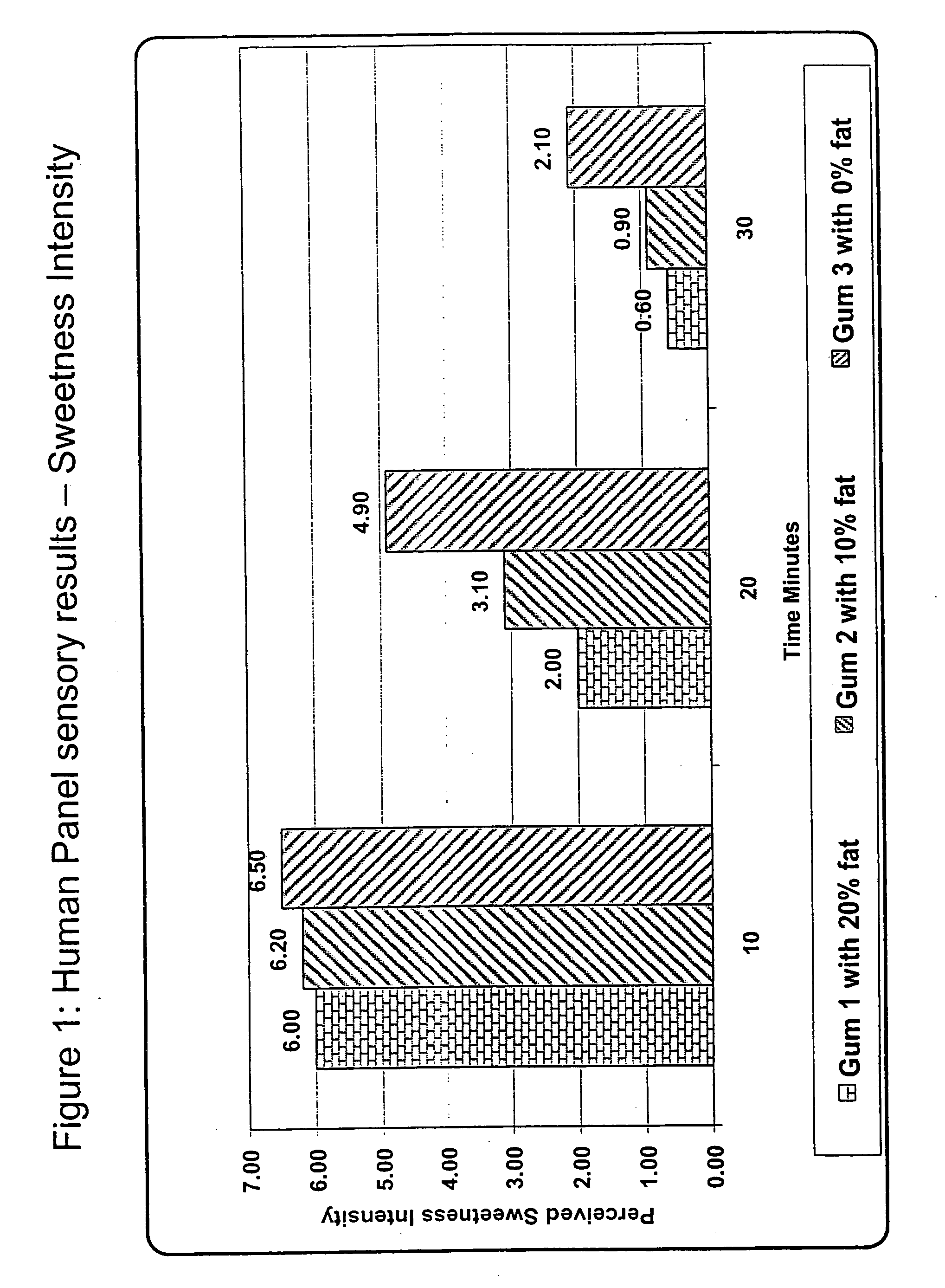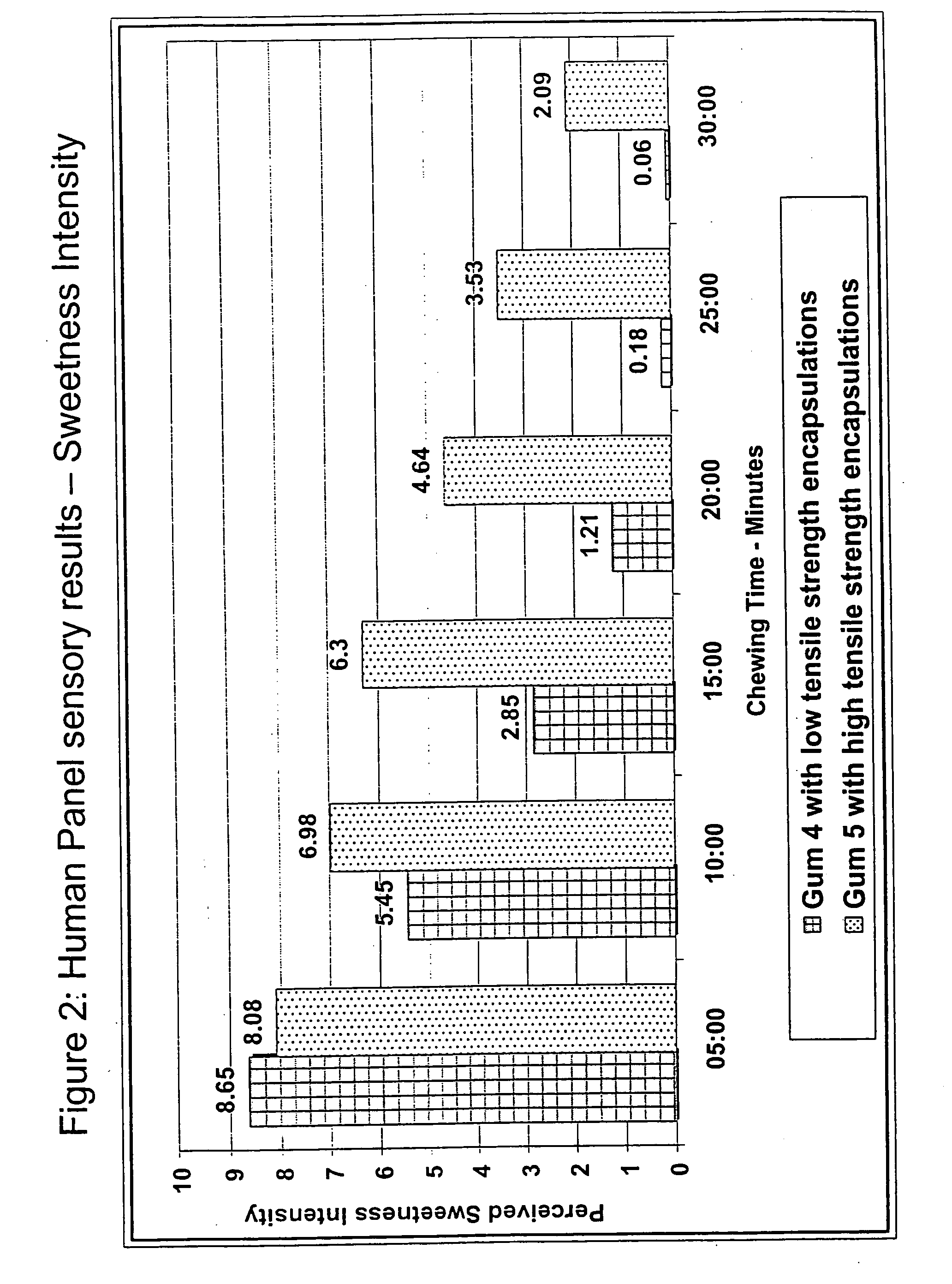Delivery system for active components as part of an edible composition having preselected tensile strength
a technology of active components and edible compositions, which is applied in the direction of sweetmeat, capsule delivery, chewing gum, etc., can solve the problems of high intensity sweeteners losing their sweetness intensity quickly, unstable high intensity sweeteners, and initial rapid bursts that can be unpleasant to many consumers
- Summary
- Abstract
- Description
- Claims
- Application Information
AI Technical Summary
Benefits of technology
Problems solved by technology
Method used
Image
Examples
example 1
[0104] The following study shows the effect of the presence of oil or fats on the overall tensile strength of one embodiment of the delivery system of the present invention. The rate of release of the active component (i.e., aspartame) is affected by the variation in tensile strength such that the release rate of the higher tensile strength delivery system is generally slower than the release rate of lower tensile strength formulations. When relatively large amounts of oil or fat are used, the tensile strength of the delivery system is generally lowered which increases the release rate of the active component. Conversely, reduced amounts of fats or oils are employed typically for higher tensile strength delivery systems exhibiting lower release rates.
Experimental Procedure
Preparation of the Delivery Systems
[0105] Four delivery systems for delivering a high intensity sweetener (i.e., aspartame) containing varying amounts of polyvinyl acetate, and oils or fat were prepared in acco...
example 2
[0112] The following study examined the relationship between tensile strength of the delivery system and the release rate of the encapsulated active component. The presence of fats or oils were varied to modify the tensile strength of the delivery system, thereby allowing the release rate of the encapsulated active component to be adjusted as desired.
Experimental Procedure
Preparation of the Delivery Systems
[0113] Four delivery systems were prepared using the ingredients listed in Table 3.
TABLE 3DeliveryDeliveryDeliveryDeliveryIngredientSystem 5System 4System 6System 7Polyvinyl acetate (High 65% 65%Tensile Strength)Polyvinyl acetate (Low63%63%Tensile Strength)Hydrogenated Oil15%3.5%15%3.5%Glycerol Monostearate 5%1.5% 5%1.5%Aspartame17% 30%Acesulfame-K17% 30%Tensile Strength (psi)6,50042,900***
*not measured but believed to be similar to delivery system no. 5
**not measured but believed to be similar to delivery system no. 4
[0114] The above delivery systems (i.e., delivery syste...
PUM
 Login to View More
Login to View More Abstract
Description
Claims
Application Information
 Login to View More
Login to View More - R&D
- Intellectual Property
- Life Sciences
- Materials
- Tech Scout
- Unparalleled Data Quality
- Higher Quality Content
- 60% Fewer Hallucinations
Browse by: Latest US Patents, China's latest patents, Technical Efficacy Thesaurus, Application Domain, Technology Topic, Popular Technical Reports.
© 2025 PatSnap. All rights reserved.Legal|Privacy policy|Modern Slavery Act Transparency Statement|Sitemap|About US| Contact US: help@patsnap.com



